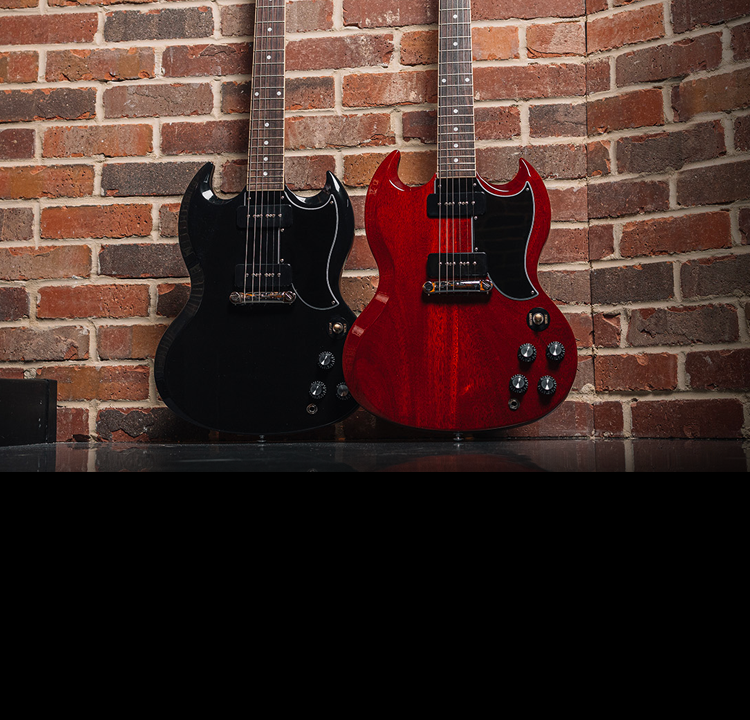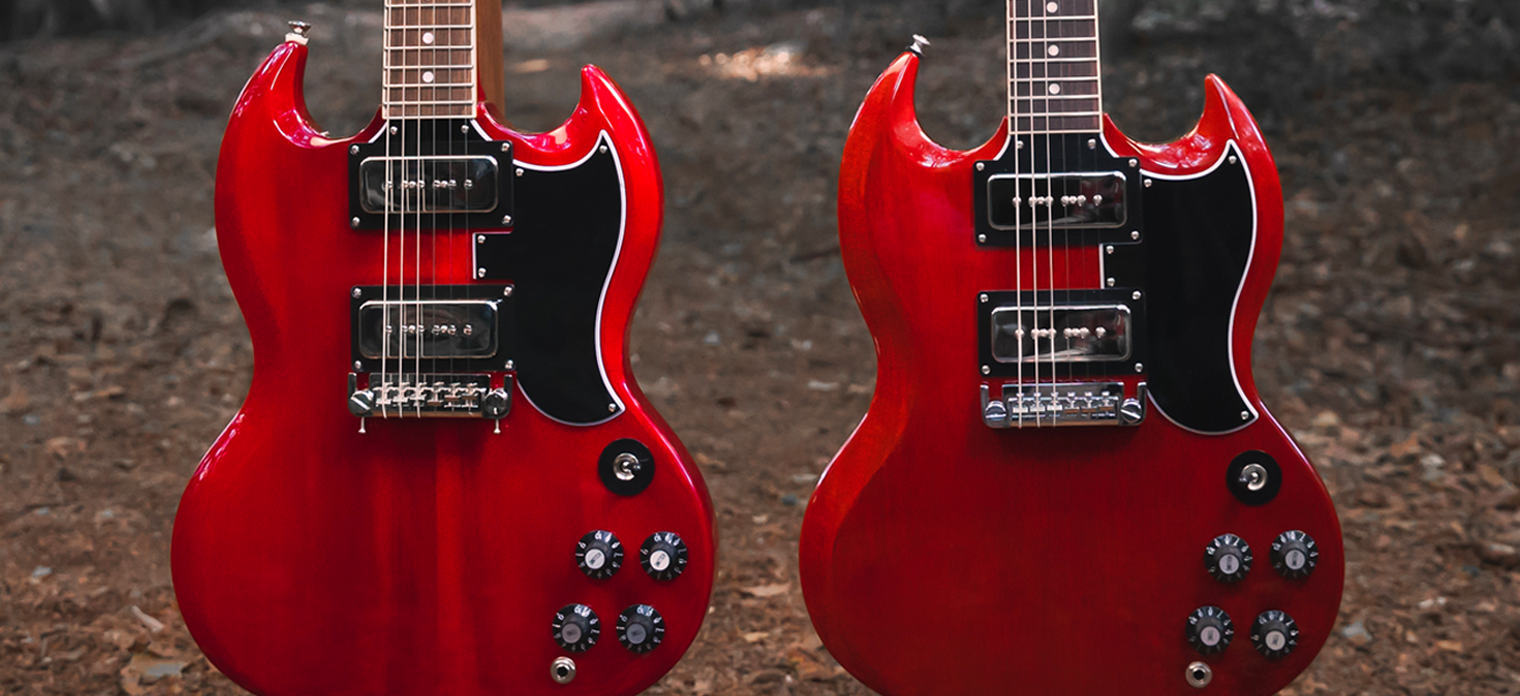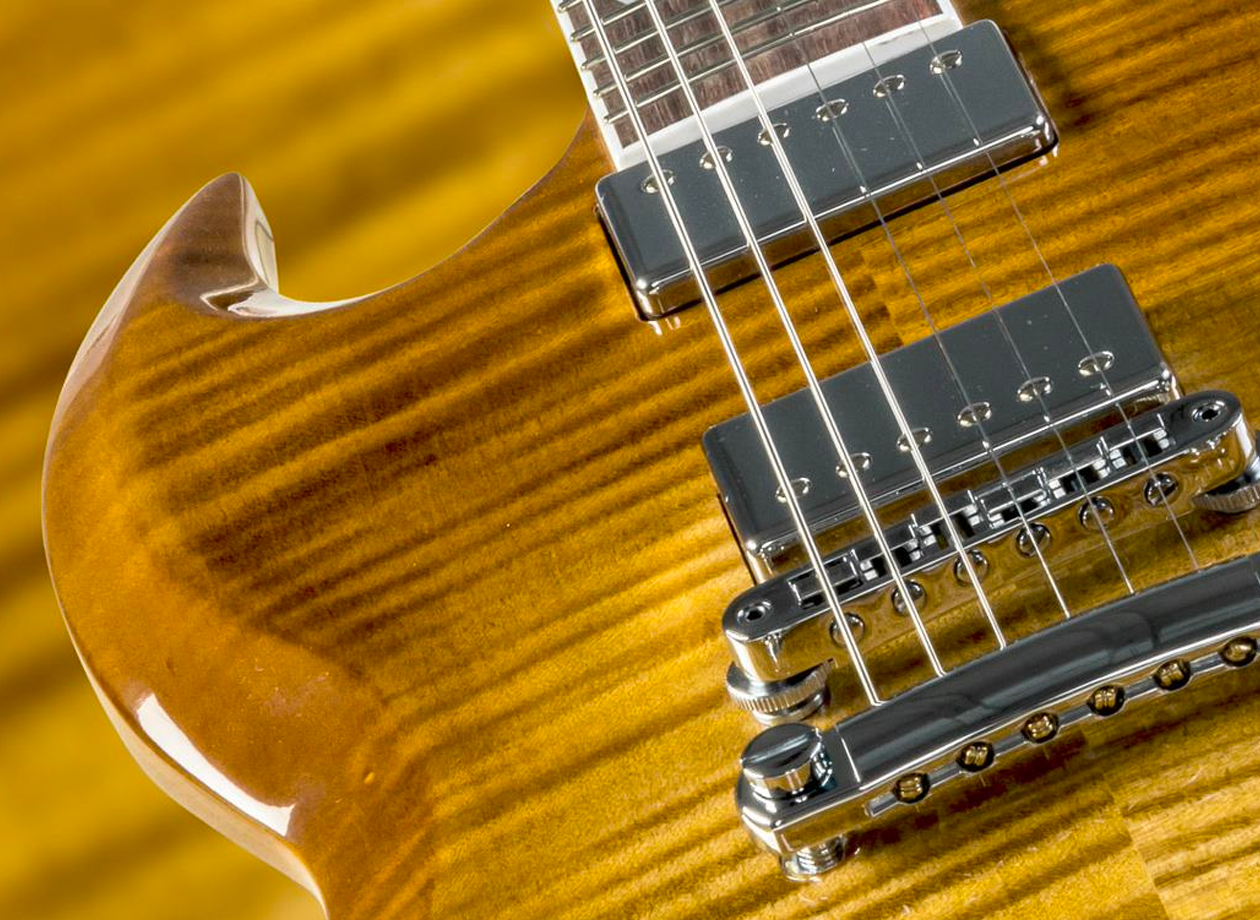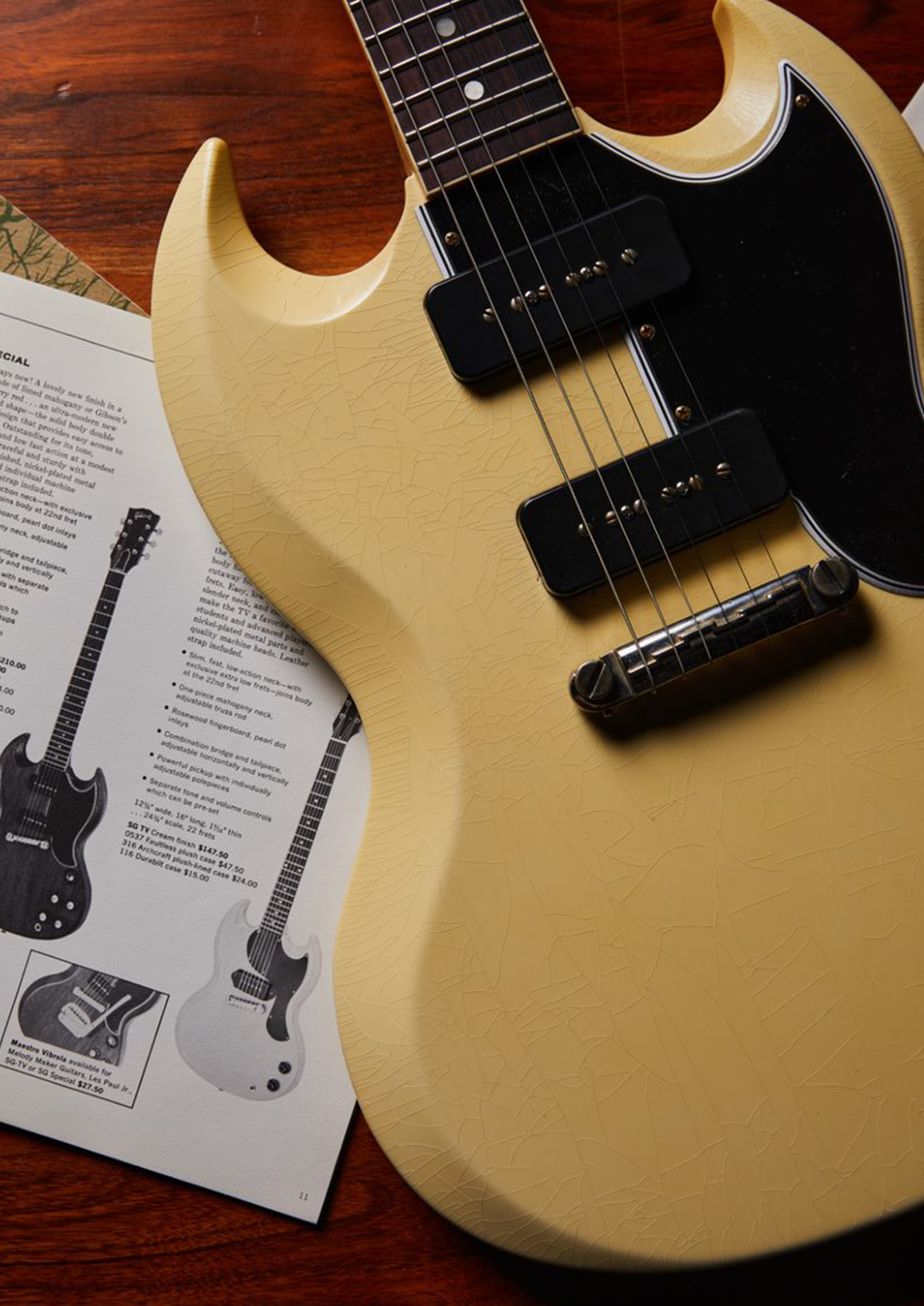EXPLORE THE SG COLLECTIONS
The Gibson USA Collections: Shaping sound across genres and generations of guitar players.
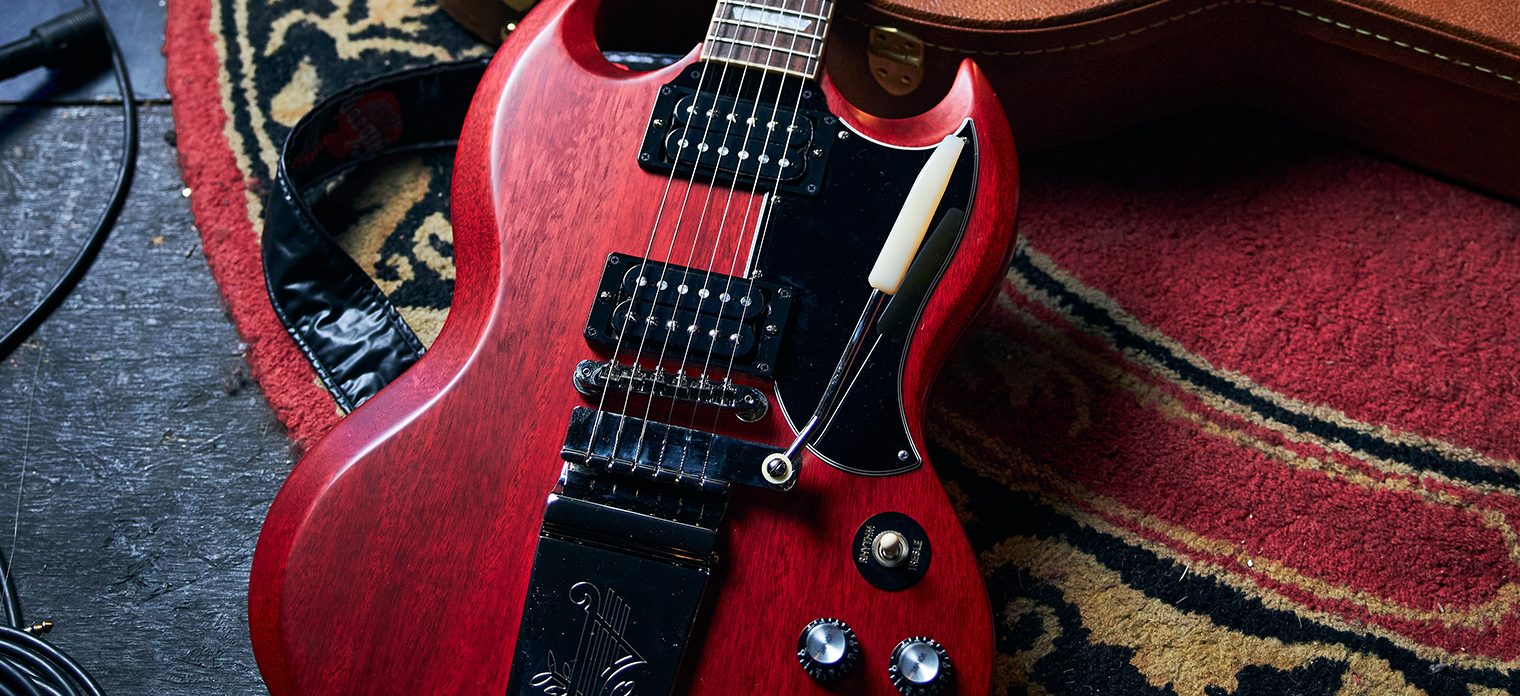

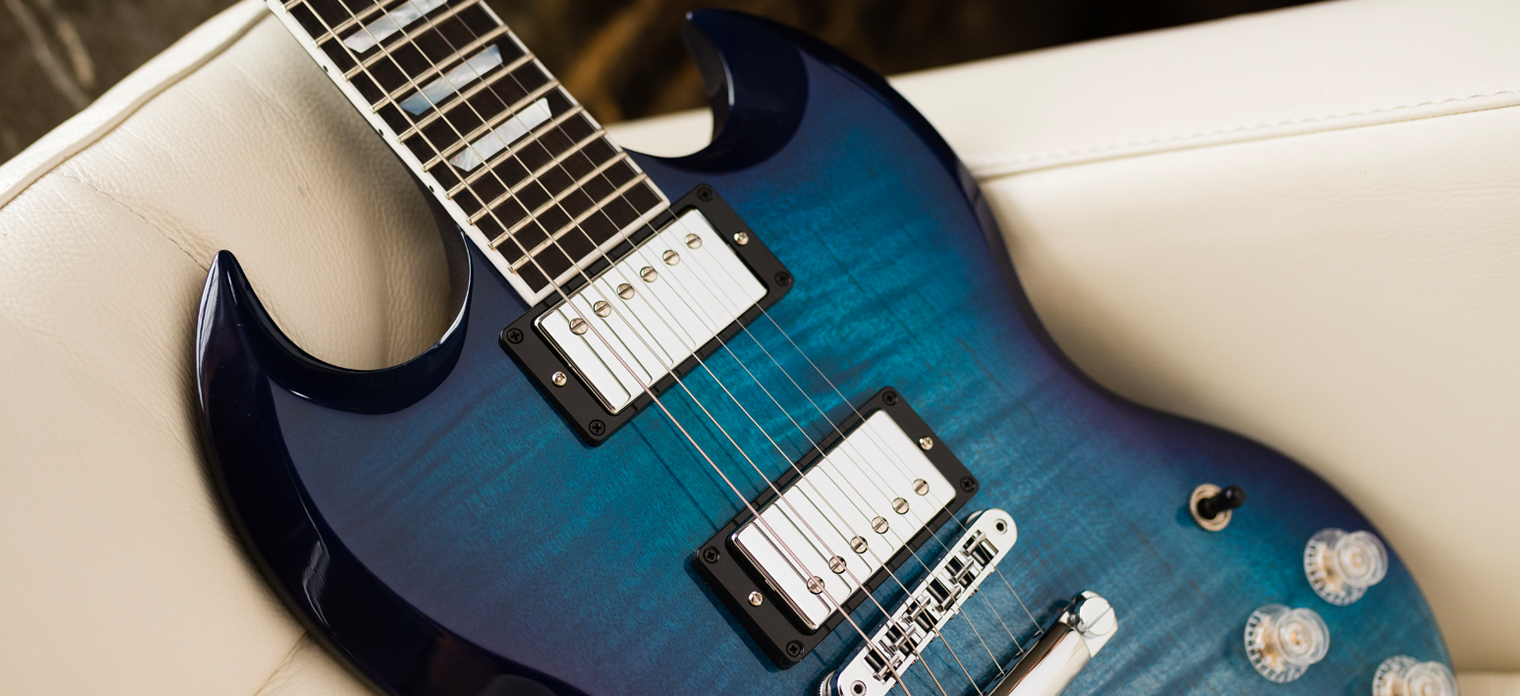

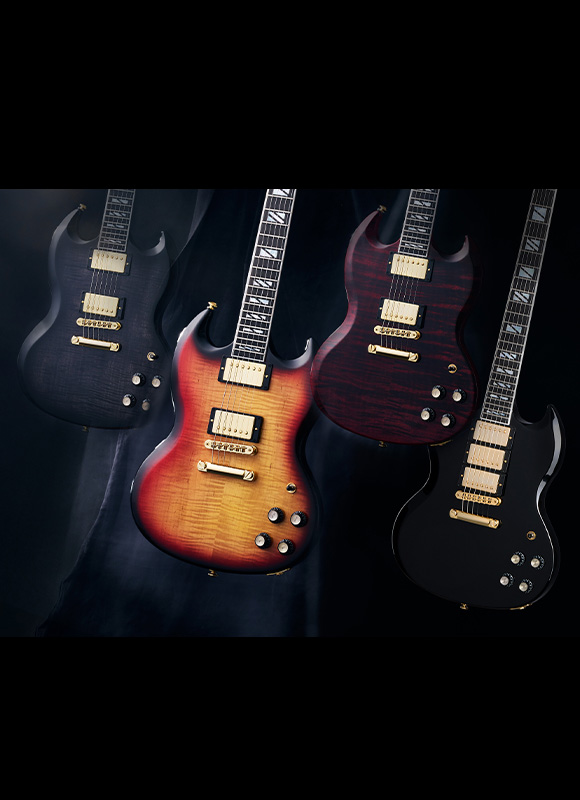

SG CUSTOM SHOP COLLECTIONS
Original. Aspirational, Authentic. The ultimate in craftsmanship, art, and historical accuracy.


LEARN ABOUT THE GIBSON SG
Gibson's innovative body styles profoundly changed the sound of music history.


The Story Behind the SG
At its genesis in 1961, the SG was a Les Paul! Pushed along by the desire to innovate, Ted McCarty—one of Gibson's most industrious presidents—responded to the growing popularity of double-cut guitars in the market with the "devil horns" of the Solid Guitar (SG).
A staple in the pantheon of classic guitar designs, the SG caught on right away, and it's the best-selling Gibson model of all time.
SEE THE GIBSON SG IN ACTION
Tony Iommi: SG Special
Tony Iommi's iconic riffs, heavy tones, and massively influential albums created the blueprint for heavy metal and many other genres to follow. His career, like the man himself, is universally loved and revered. And while his innovative tuning and playing styles were a major part of his monstrous tones, a heavily-modified 1964 Gibson SG was at the center of it all.
Now Gibson USA has made a guitar based on the iconic original that launched countless heavy riffs, with a mahogany body, bound mahogany neck with a rounded profile, Indian rosewood fretboard with 22 frets, a Graph Tech® nut, Grover® Rotomatic® tuners with contemporary style buttons, and chrome-covered P-90 pickups. A reproduction of Tony's "Monkey" sticker is included in the case. A left-handed version is also available.
Jake Kiszka: ’61 Les Paul SG
In one of our most faithful recreations yet, the Custom 60th Anniversary ’61 Les Paul SG is a stunner from top to bottom, and in the hands of Greta Van Fleet guitarist Jake Kiszka, it really comes to life.
In 1961, Gibson brought an entirely new shape to the lineup--what we now know as the Les Paul SG. A sleek, double-cutaway, all-mahogany body design that would eventually become Gibson’s most popular guitar to date. The now-iconic shapes were considered bold for the time, but then Gibson president, Ted McCarty, felt the market demanded new and innovative designs.
![image System.Collections.Generic.Dictionary`2[System.String,System.String]](http://images.ctfassets.net/m8onsx4mm13s/1H1v9qpQUiXtUefdSeihkb/7af9add72964196bf5a079c85f5615bb/gibson_electric_certified_vintage_image_200x165.png)
![image System.Collections.Generic.Dictionary`2[System.String,System.String]](http://images.ctfassets.net/m8onsx4mm13s/2UfyTR8fVDqeQt8A6bVl0f/c8ab28fa59d96203c5fafdb69d22929e/gibson_tv_the_process_flyout_200x165.png)
![image System.Collections.Generic.Dictionary`2[System.String,System.String]](http://images.ctfassets.net/m8onsx4mm13s/36v4Ks8xHuOha0PW2MQMa8/9b09130d6a014e1a70f5ccbba67f5691/the_collection_title_card_flyout.png)
